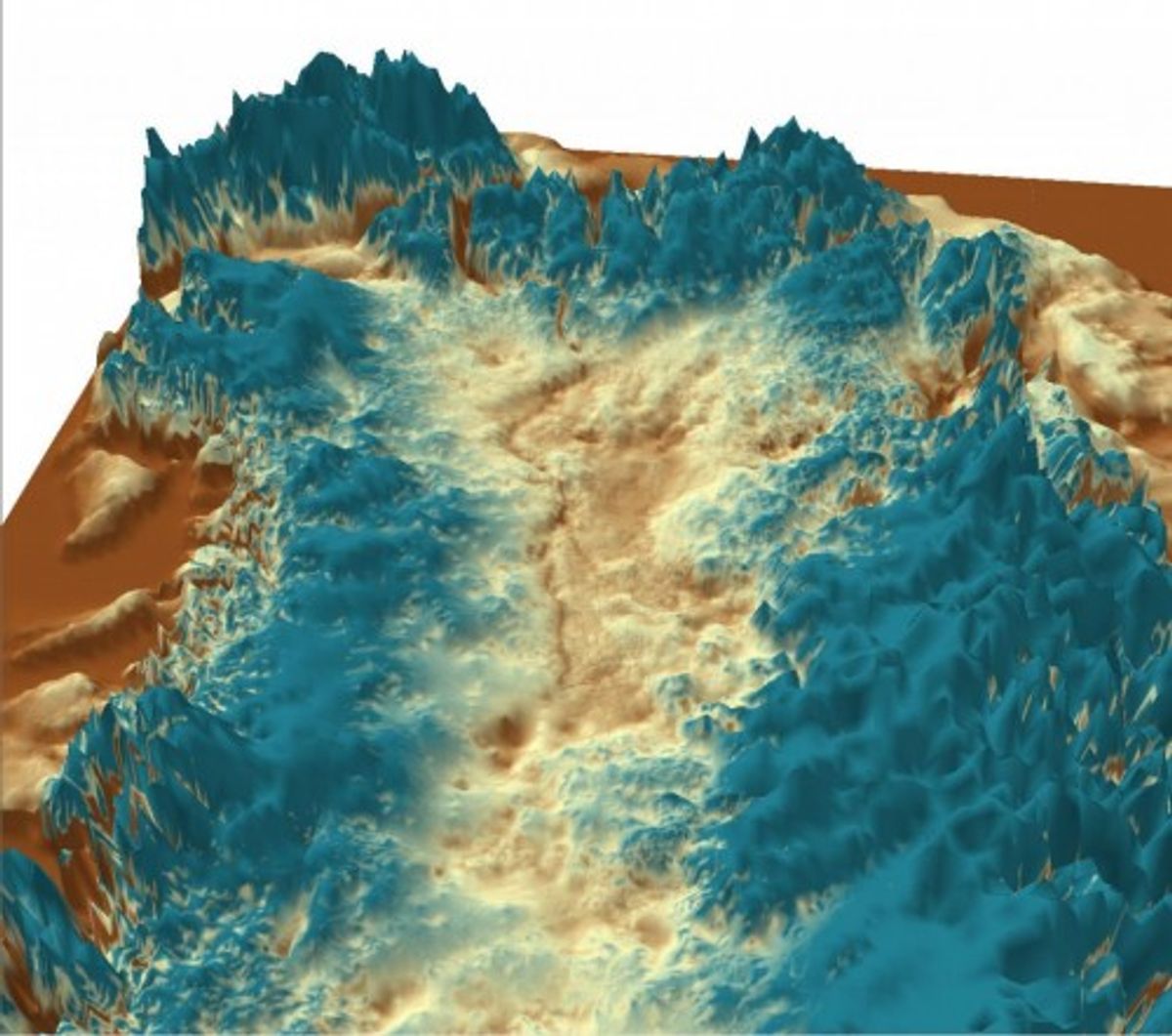An enormous ravine, the longest in the world and comparable in depth to the Grand Canyon, has been discovered underneath Greenland's thick ice sheet.
Like all great discoveries, researchers stumbled upon it by accident. And at 460 miles long, 6 miles wide and, in some place, 2,600 feet deep, it's almost unbelievable that we didn't know it was there before. "With Google Streetview available for many cities around the world and digital maps for everything from population density to happiness one might assume that the landscape of the Earth has been fully explored and mapped," lead author Jonathan Bamber of Bristol's School of Geographical Sciences said in a statement. "Our research shows there's still a lot left to discover."
The canyon's existence may help explain how Greenland's melting ice is transported into surrounding oceans, instead of forming underground lakes. Knowing it's there and understanding its topography can help scientists make better predictions about how the melting ice sheet will affect sea level rise as the climate continues to warm.
"The canyon has never been seen by humans," BBC News helpfully points out, because we "didn't exist four million years ago." Unless the three miles of ice covering it melts -- and here's hoping it doesn't -- we aren't likely to get a firsthand look any time soon.
Video from NASA describes how they found it and provides a first glimpse:



Shares